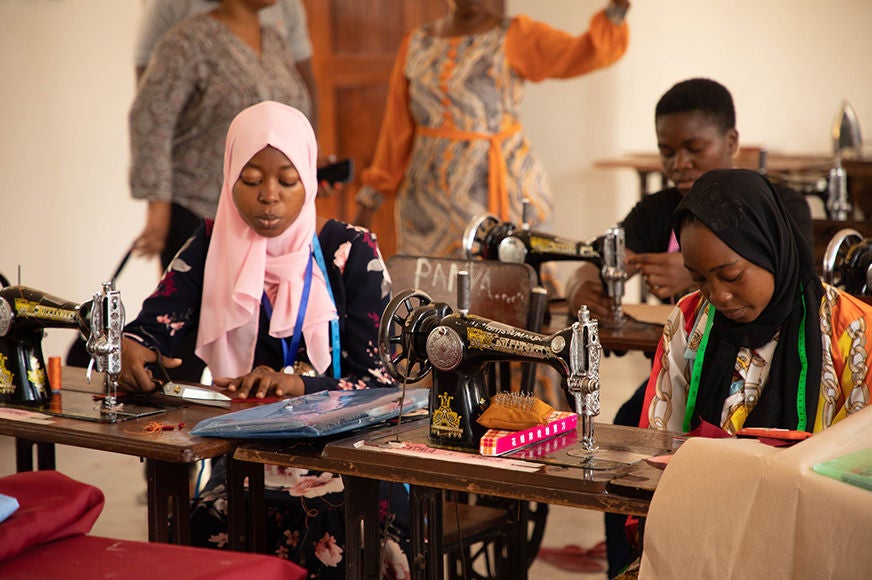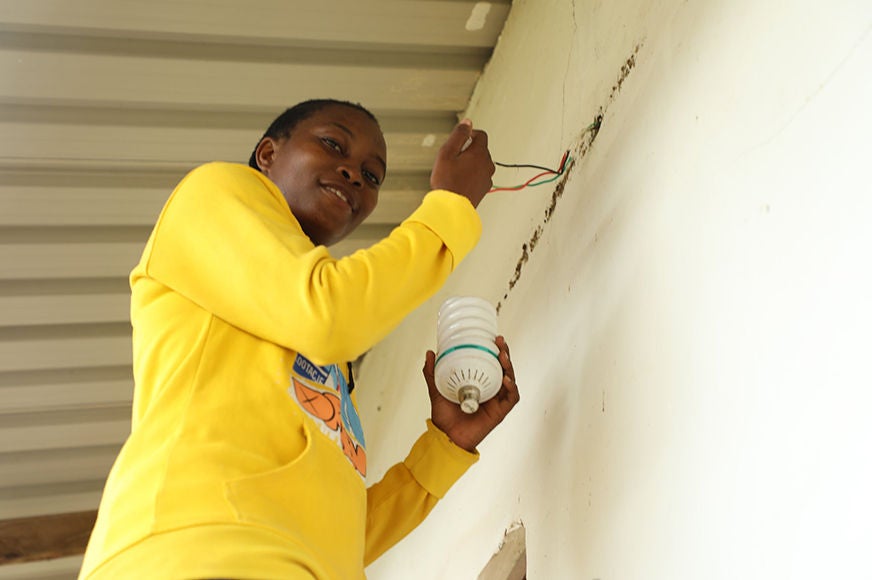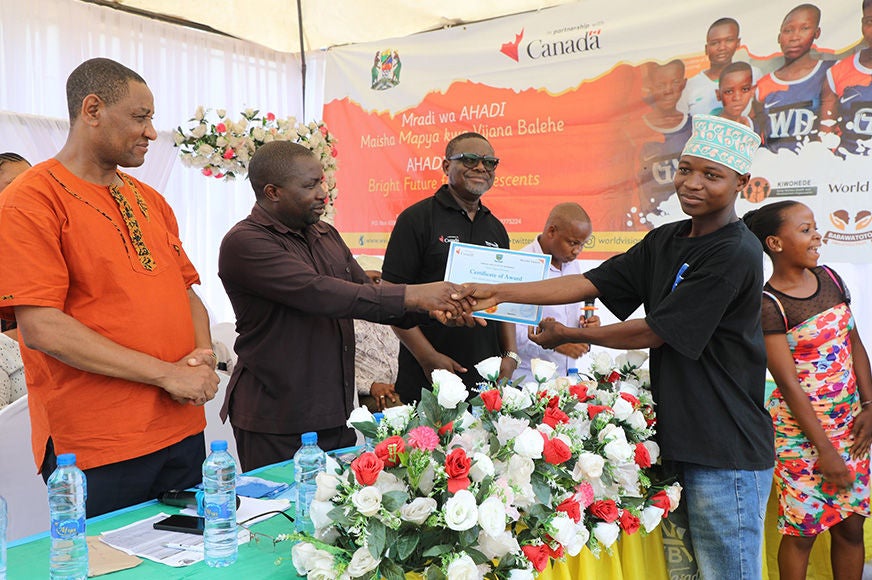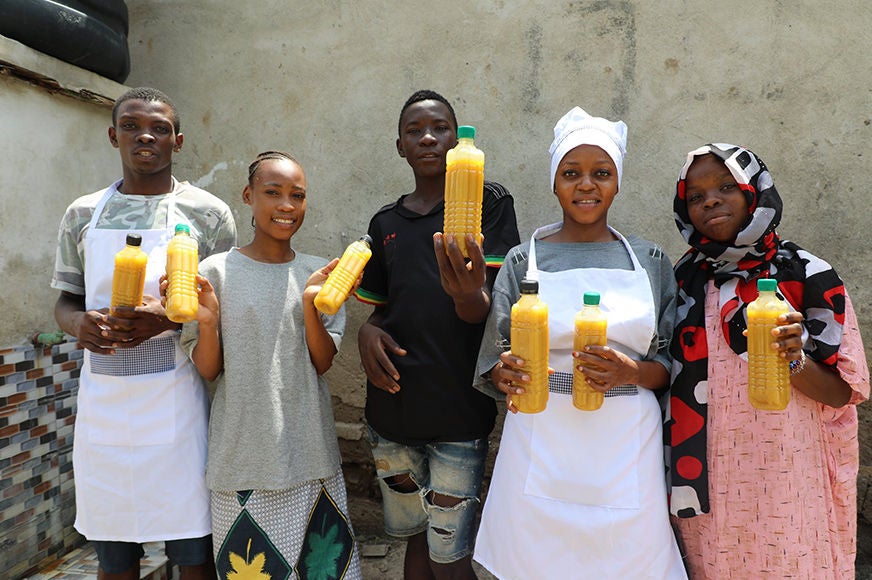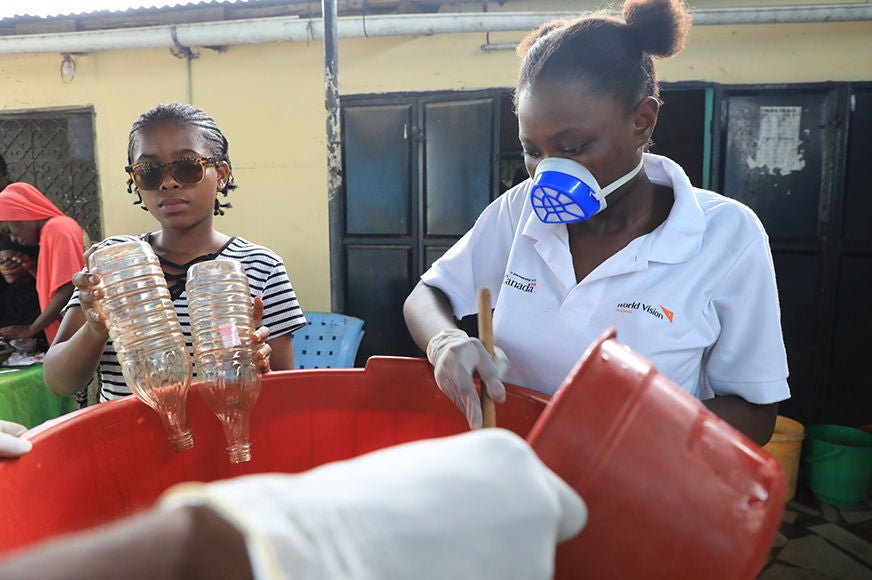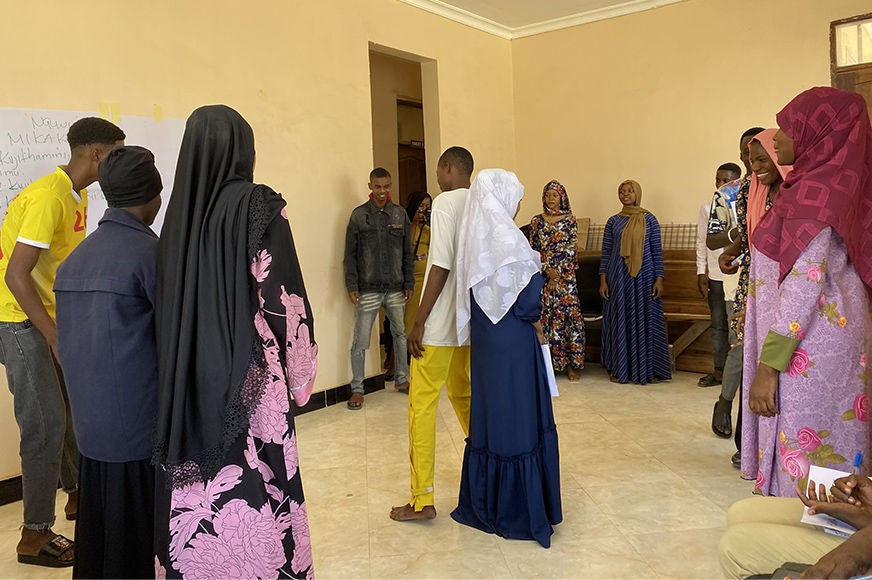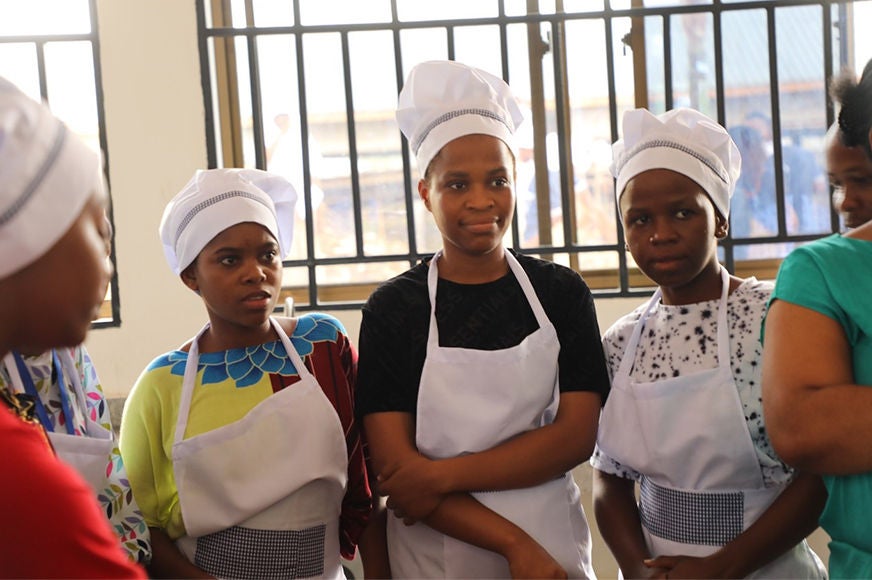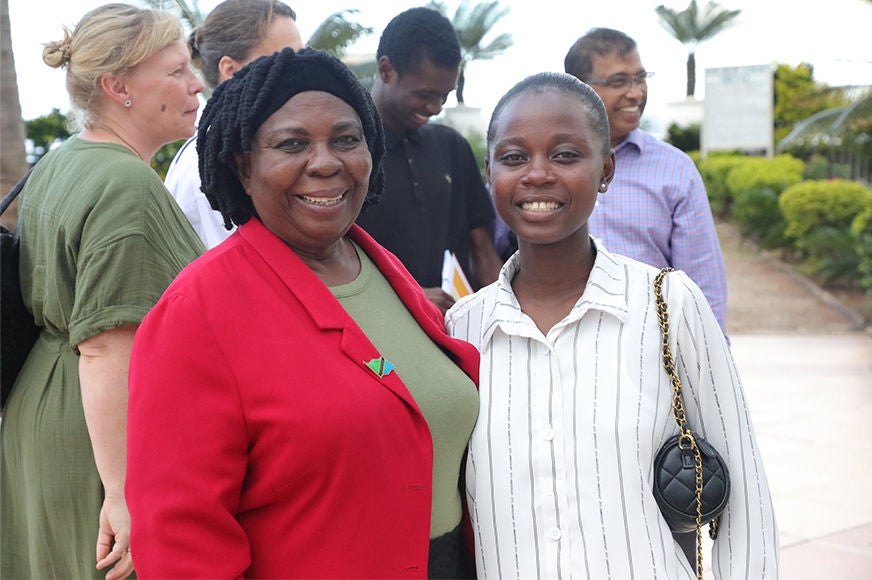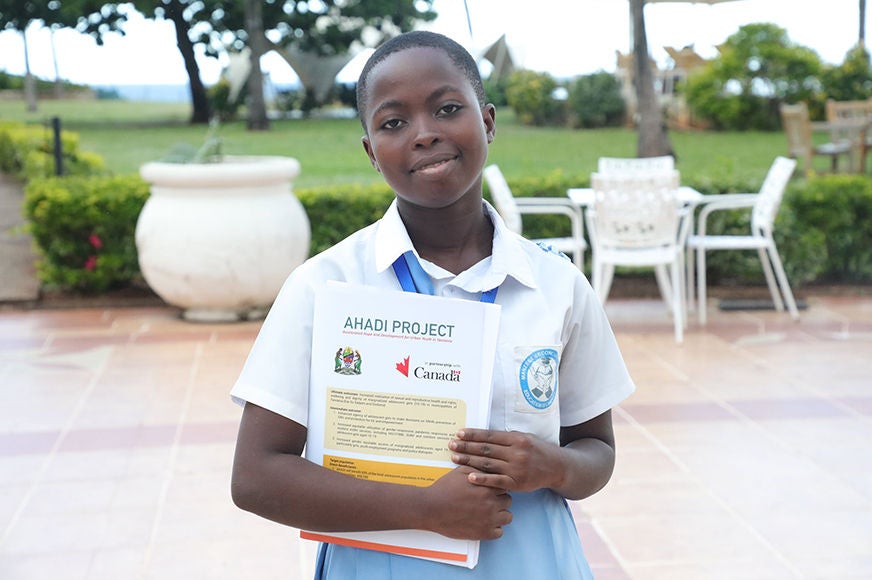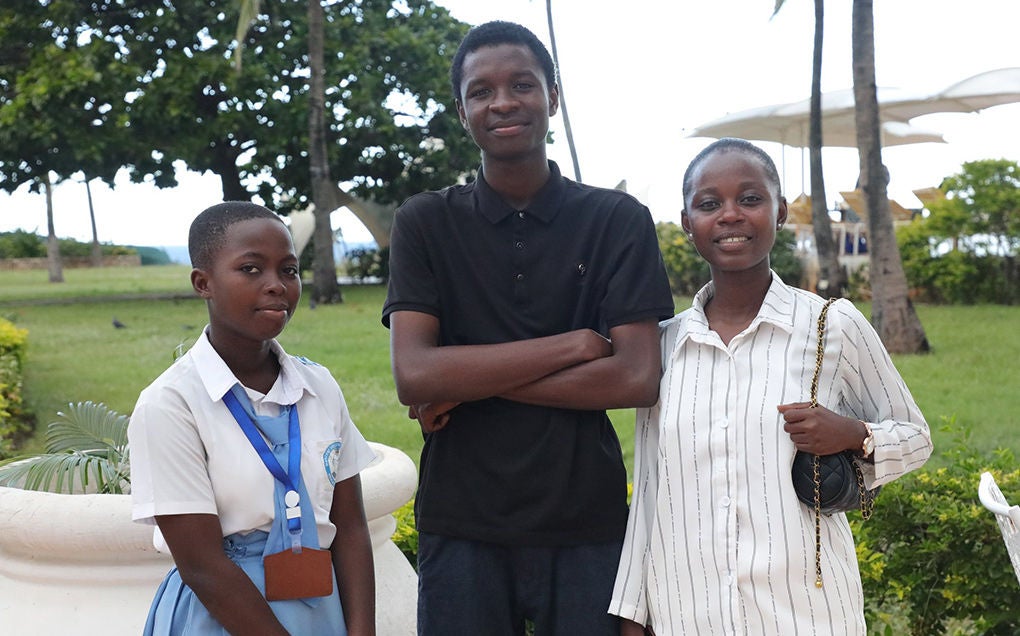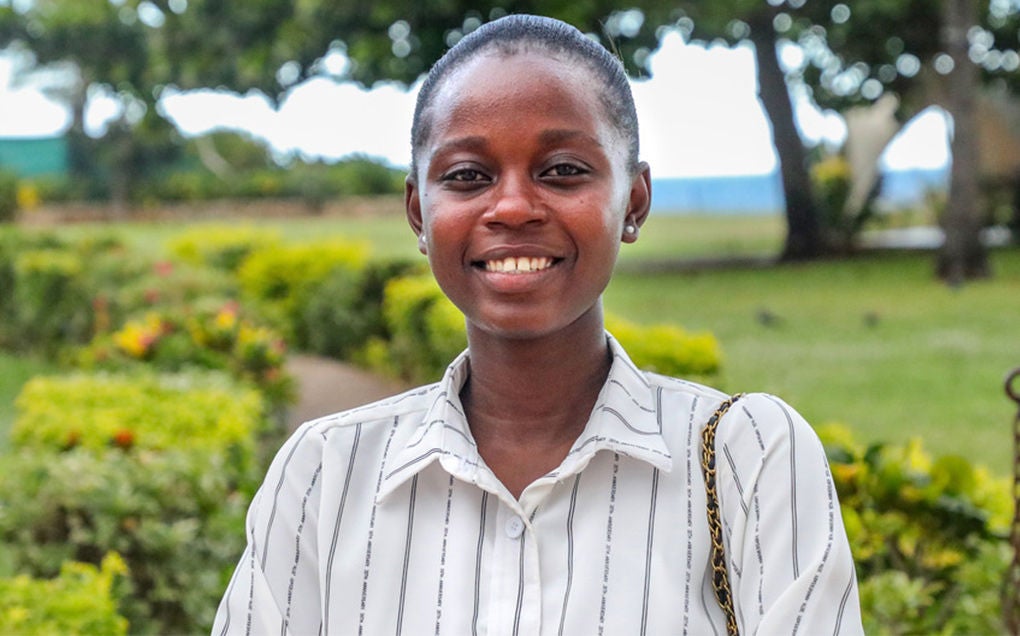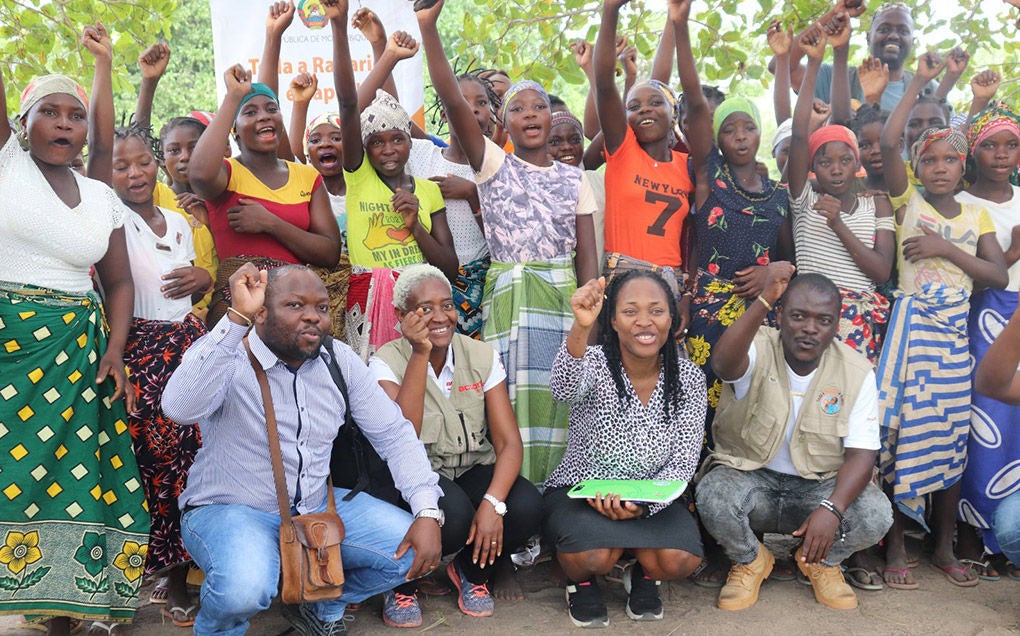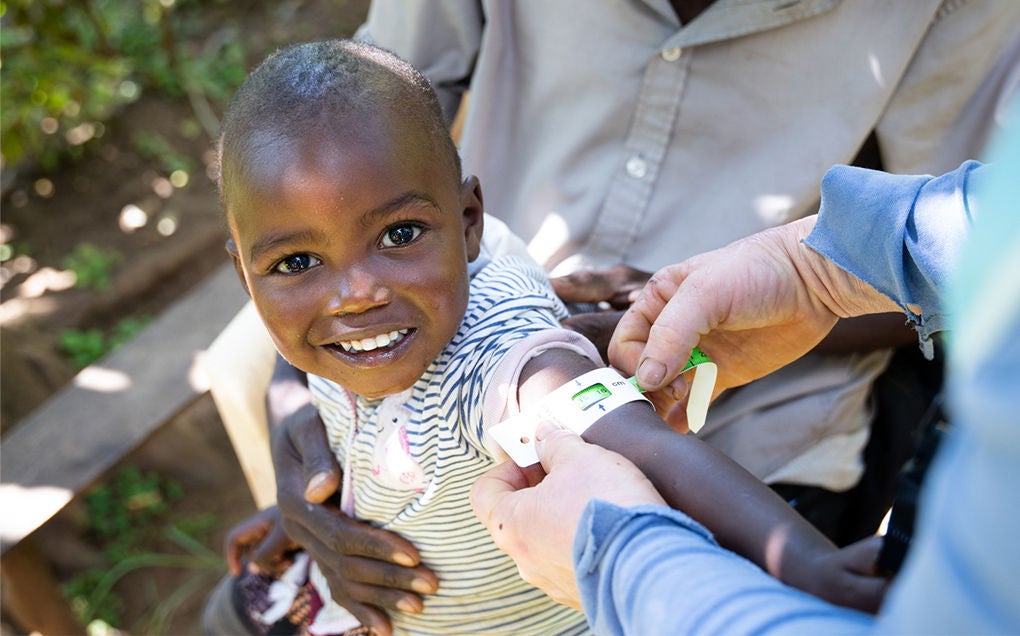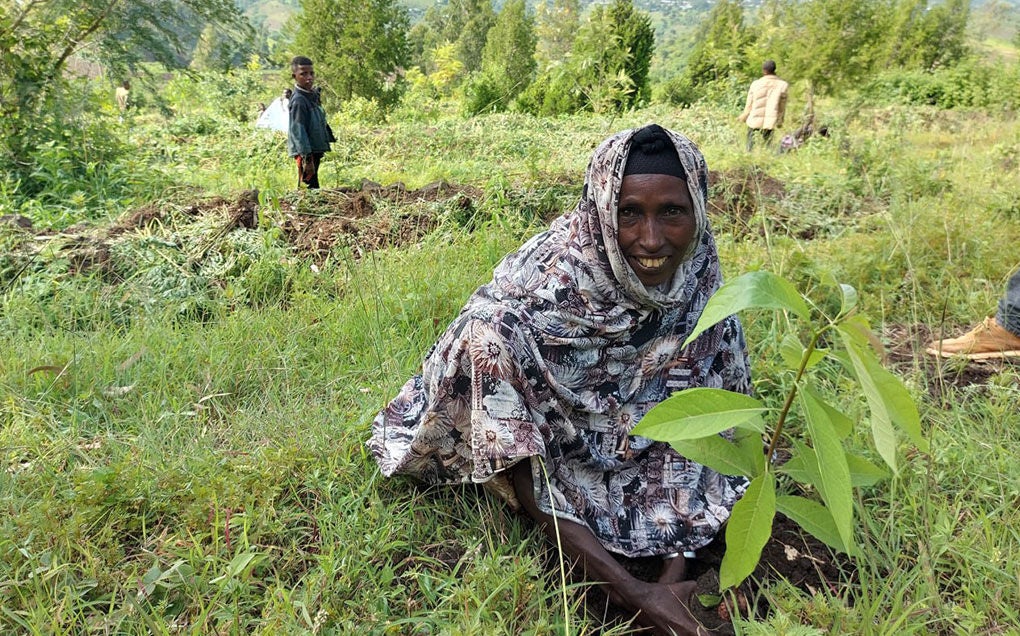Program details
Tanzania’s National Accelerated Investment Agenda for Adolescent Health and Well-being (NAIA) boldly states that “…adolescents represent the promise and potential of Tanzania’s future development, presenting an unprecedented opportunity to address adolescent health and well-being.” In full alignment with the NAIA, World Vision Canada, in partnership with World Vision Tanzania, is implementing the Accelerated Hope and Development for Urban Adolescents in Tanzania (AHADI) project. The AHADI project works together with adolescent girls and boys to realize their adolescent sexual and reproductive health and rights (ASRHR) in urban Tanzania. Funded by the Government of Canada, AHADI is a rights-based, innovative and gender-transformative urban ASRHR project. The seven-year project runs from 2022-2028 in Dodoma City and Dar es Salaam.
Our Partners:
- Local rights-based partners: Kiota Women’s Health and Development (KIHOWEDE) and adolescent rights organization, BabaWatoto
- Academic partners: University of Manitoba International Centre for Global Public Health, and Tanzania’s National Institute of Medical Research
Areas of focus:
Health, Gender Equality and Social Inclusion
Planned lifecycle:
2022 - 2029
Participants:
476,000
Funding partner:
Global Affairs Canada
Project Design
The AHADI project was founded on the results of a rapid gender and human rights assessment, and co-designed with adolescent girls and boys from Dar es Salaam and Dodoma cities. AHADI is built on a feminist foundation that is advancing gender equality by contributing to the increased realization of the ASRHR, well-being and dignity of marginalized girls (aged 10-19 years))—in all their diversity—in urban municipalities of Tanzania. The project also identifies and addresses barriers to health-related human rights for adolescent girls and boys.
This is accomplished by:
- Enabling the agency of adolescent girls to make informed decisions on their ASRHR, prevention of sexual and gender-based violence (SGBV) and protection for gender equality and empowerment.
- Increasing equitable utilization of gender-responsive and resilient ASRHR services, including HIV, SGBV and nutrition services by adolescent girls aged 10-19 years.
- Increasing gender equitable access of marginalized adolescents aged 15-19 years, particularly girls, to employment programs and policy dialogues.
Gender Equality Integration Innovation: AHADI Impact Model
“AHADI is already helping us a lot. The confidence I [have now] is not something I had before the project. I was able to be a lead adolescent volunteer and speak with the adolescents in my group, because of the confidence built in me by the project. This has helped me put it into practice quickly.”
– Laila, 18, AHADI Steering Committee Leader
The AHADI Impact Model (AHADIIM) is the main delivery platform of AHADI. It provides a safe space for adolescent girls and boys to become empowered with knowledge of ASRHR, and an opportunity for them to unpack harmful, restrictive constructs of masculinity and femininity. AHADIIM integrates two evidence-based models: Care Groups and IMPACT+. Care Groups create a multiplier effect through peer-to-peer education and behaviour change. IMPACT+ is an integrated life skills approach to engage adolescents in mentoring and education in a manner that holistically addresses key ASRHR issues.
AHADI-IM groups are comprised of 20-25 adolescents, led by a lead adolescent volunteer. The lead adolescent is supported and mentored by a promoter (a local partner staff member or a teacher), who is supported by a supervisor (an AHADI staff member) in each urban centre. AHADIIM integrates peer-to-peer knowledge sharing with its local rights-based partners to promote crucial ASRHR knowledge and amplify voices to stand up for their rights. After 18 months, a new adolescent cohort begins.
There is an adolescent council in each ward, and members participate in AHADI’s Adolescent Steering Committee, where adolescent voices help lead the project to meet its gender equality goals.
Featured story
Gender Equality Integration Innovation: World Vision's Gender Models
Channels of Hope for Gender
Channels of Hope for Gender works closely with faith leaders and builds on their influence to explore gender identities, norms and values that impact female-male relationships in communities, using faith-based texts. As new understanding is fostered, women and men are empowered to celebrate who they are, moving people toward healthier and more equitable relationships and helping eliminate gender-based violence.
MenCare
MenCare helps men critically reflect on the cultural and gender norms that perpetuate the devaluation of girls and serve as obstacles to men’s participation as involved fathers. Male dialogue groups highlight their key role in supporting their partners' and families' health and rights. This includes men’s involvement in accompanying partners to health services, eliminating gender-based violence, sharing decision-making, taking on more household chores and childcare and preventing child marriage.
Citizen Voice and Action
Citizen Voice and Action (CVA) brings together citizens, service providers, the local government and partners in a collaborative process to improve the quality of health services. CVA has three phases: 1) enabling citizen engagement: 2) engagement through community gathering; and 3) improving services and influencing policy. CVA scorecards help ensure that government services equitably respond to vulnerable women and girls, as well as those with intersectional vulnerabilities.
From the field
